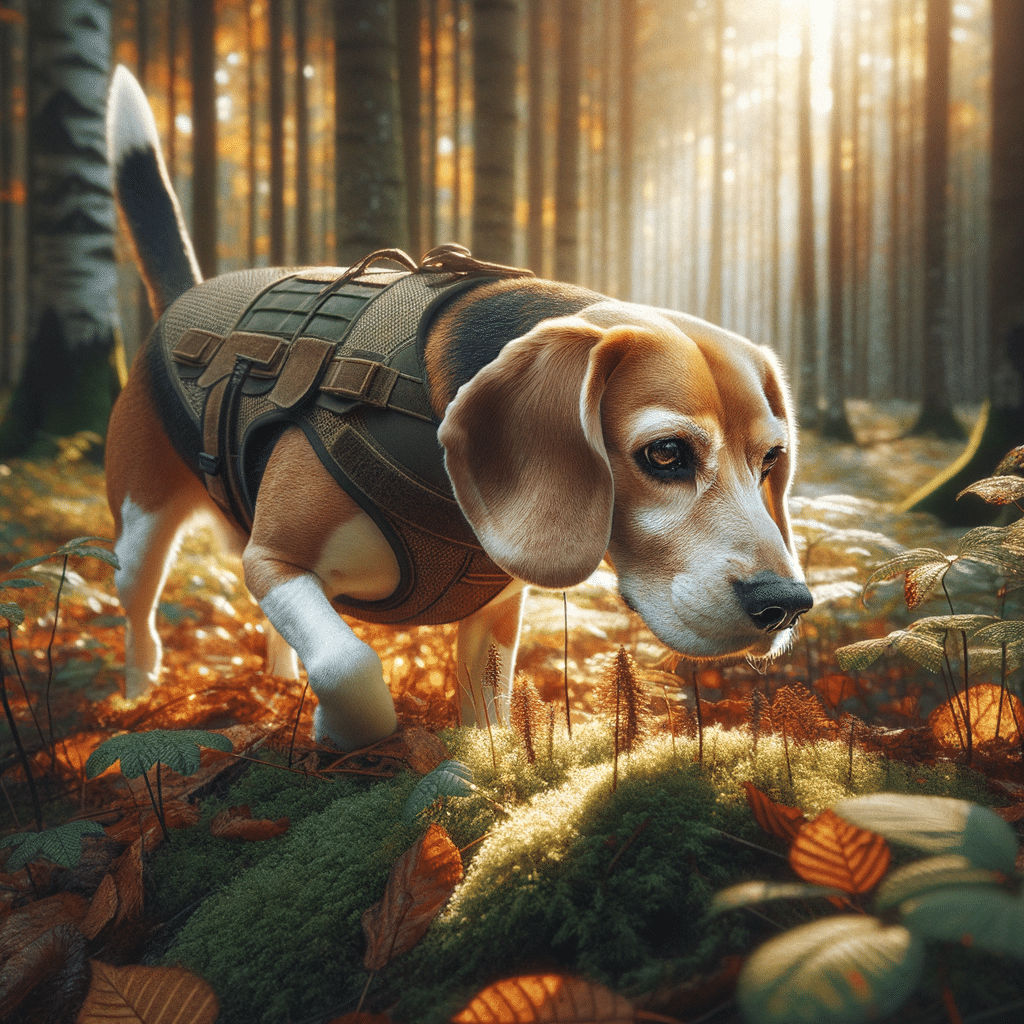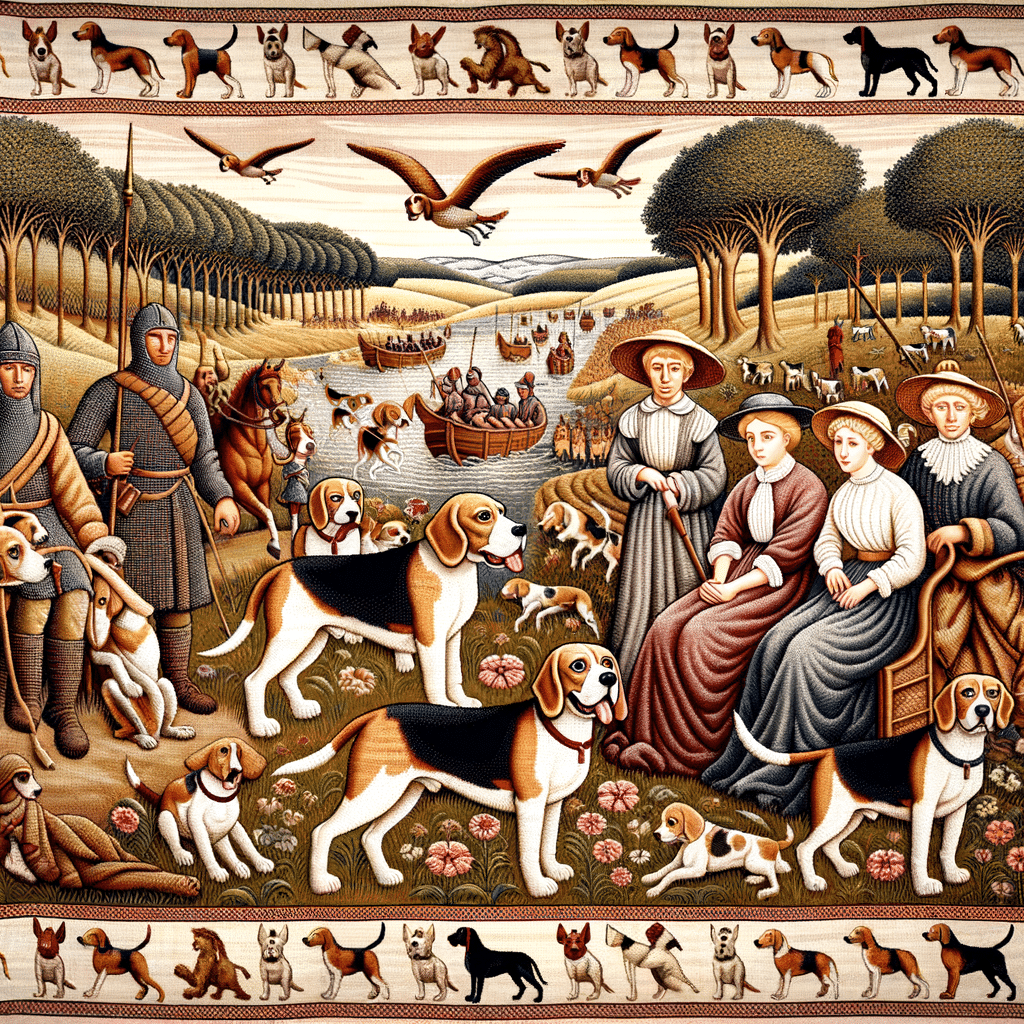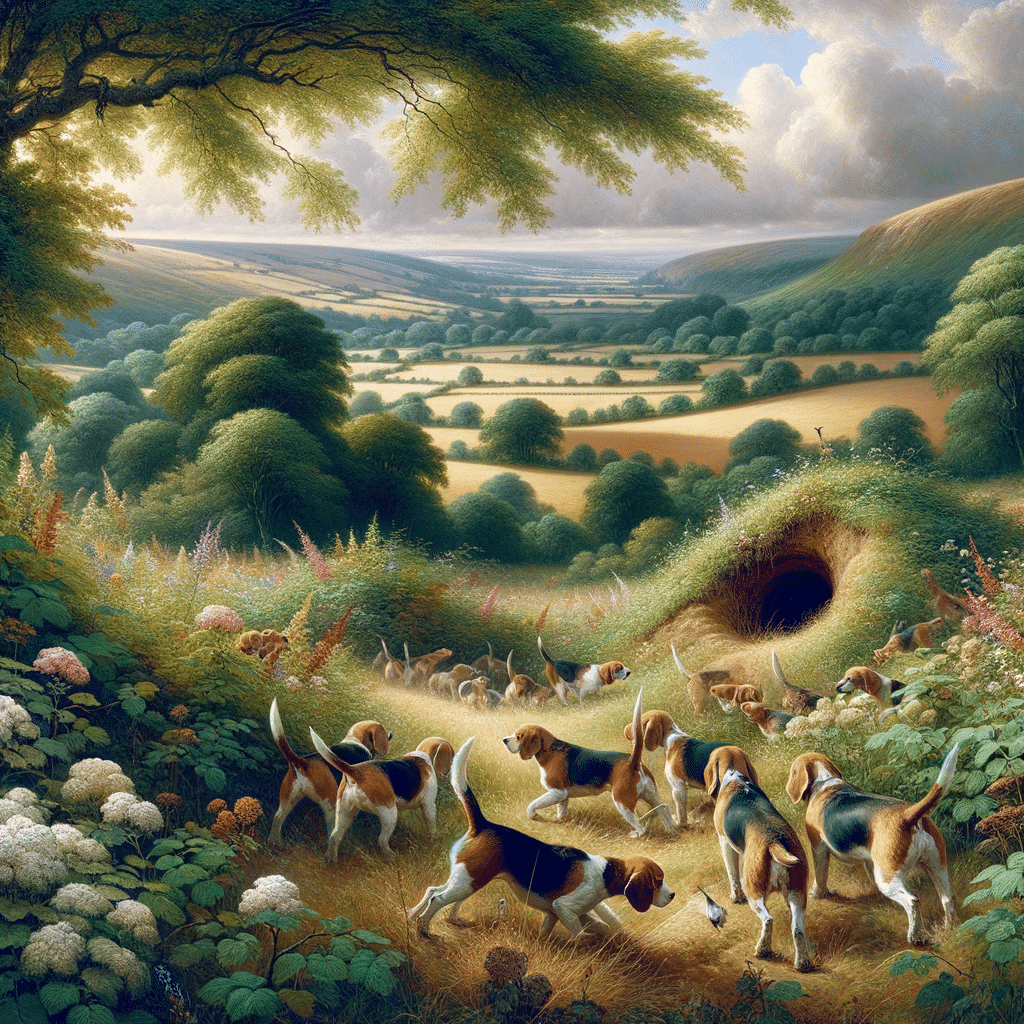When adding a canine companion to the family, potential owners often compare different breeds to find one that best suits their lifestyle. Two breeds that frequently come up for comparison are beagles and bulldogs. Each breed has its characteristics and history, attracting different owners based on their needs and wants.
In This Article
Understanding the distinctions between beagles and bulldogs is key to making an informed decision. Owing to their origins as hunting dogs, beagles are renowned for their keen sense of smell and tracking instinct.
Bulldogs, however, have a history that includes use in bull baiting. Today, they are known more for their calm demeanor and distinctive appearance. Both breeds exhibit traits that make them excellent family pets, but their physical and temperamental differences are important to consider.
Highlights
- Beagles and Bulldogs offer different advantages for potential pet owners.
- Each breed has a distinct history that contributes to its present-day characteristics.
- Care and health considerations vary between beagle vs bulldog breeds.
Breed Origins and History
Exploring the roots of beagles and bulldog breeds provides insight into their rich histories and roles in dog breed development in England and across the world.
Beagle Origins
Beagles, a breed known for their keen sense of smell and tracking ability, have origins that can be traced back to ancient Greece. Small hounds were used to hunt small game, leading to the development of the breed known today as the beagle.
This breed was further developed in England post-Roman occupation. The name ‘Beagle’ is believed to derive from the French word “be’geule,” indicating the breed’s strong vocalizations.
- Other names: Before standardization, “beagle” referred generically to small hounds.
- Notable history: The now-extinct “Pocket Beagle” was a miniature version favored by English royalty like King Henry VII and Queen Elizabeth I.
Bulldog Ancestry
The bulldog’s history is linked with a traditional sport known as bullbaiting, which was first officially mentioned in England around 1210. Bulldogs were bred and trained to exhibit tenacity and strength, key attributes for dog sports.
Over time, and with the banning of bullbaiting, the breed was refined from its original form to the more companionable, less aggressive bulldog seen today.
- Purebred recognition: Organizations like the American Kennel Club recognized the breed as a purebred.
- Breed evolution: Bulldogs have evolved significantly in temperament and physicality since the bullbaiting days to become stocky, docile pets popular worldwide.
Physical Characteristics
Comparing the physical attributes of Beagles and Bulldogs reveals distinct variations in appearance, size, weight, and other distinctive features. These breeds exhibit unique traits that cater to dog owners’ different preferences.
Appearance Comparison
Beagles typically sport a smooth, double coat in various color combinations, including black, blue, brown, and lemon. They display a classic hound appearance with a muscular body and a somewhat dome-shaped head.
Bulldogs, on the other hand, are recognized for their loose, saggy skin and furrowed brows. Their coats are shorter and sleek, and grooming requirements are modest, yet regular cleaning of facial folds is essential to prevent infections.
Size and Weight
Beagles are generally smaller than bulldogs, with an average height of 13-16 inches at the shoulder and weighing between 20-30 pounds. Bulldogs are heftier, with a sturdy and compact frame, standing at about 14-15 inches tall but weighing significantly more, typically between 40-50 pounds. This difference in weight is a considerable factor for potential pet owners to consider.
Distinctive Features
Beagle ears are long and floppy, adding to their trademark hound look, and their brown or hazel eyes give them an expressive face. Bulldogs have a distinctive pushed-in nose due to being brachycephalic, which can lead to brachycephalic syndrome, a condition that owners need to monitor. Bulldogs’ broad, square stance and characteristic shuffle enhance their formidable yet endearing presence.
Temperament and Behavior
Beagle and bulldog breeds showcase distinct temperaments and behaviors valued in pet ownership, with notable differences in social interaction, trainability, and activity levels.
Personality Traits
Beagle
- Affectionate and friendly: They are loving, making them excellent companions.
- High prey drive: Their breeding as hunting dogs instills a strong instinct to chase.
Bulldog
- Even-tempered and loyal: Bulldogs often display a calm and loyal temperament.
- Stubborn: They can show a stubborn streak, which may affect training sessions.
Behavior Towards Others
Beagle
- Child-friendly: Known for being excellent with children, this dog breed demonstrates gentle playfulness.
- Other dogs and pets: Generally sociable with other dogs due to their pack-hunting history.
- Strangers: Usually friendly towards strangers, they are not typically used for guarding due to their amiable disposition.
Bulldog
- Kid-friendly: They are often kid-friendly, showcasing a patient and tolerant attitude.
- Amicable with pets: Bulldogs tend to be peaceful with other household pets.
- Reserved with strangers: They may be less exuberant with strangers and can exhibit protective behaviors, though not aggressive.
Training and Intelligence
Beagle
- Intelligent but easily distracted: Beagles are clever but may require patience in training due to their strong sense of smell and distractibility.
- Consistent training: Effective when trained with consistency and positive reinforcement.
Bulldog
- Trainable with patience: Their intelligence allows them to be trained, although their stubborn nature calls for persistent and consistent training methods.
- Positive reinforcement: Responds well to positive training techniques, with food rewards often being a strong motivator.
Health and Care
When caring for beagles or bulldogs, their distinct needs and common health issues are paramount. Proper exercise and activity are crucial for maintaining their well-being.
Common Health Issues
Beagles are generally healthy but can be prone to certain health problems, such as hip dysplasia, epilepsy, and obesity. Their long, floppy ears make them susceptible to ear infections.
Bulldogs have their own set of health concerns. Due to their brachycephalic nature, they can have breathing difficulties, especially in hot weather, and often drool more than other breeds. They are also at risk for hip dysplasia and can suffer from patellar luxation.
Beagles
- Prone to ear infections
- Risk of obesity
- Hip dysplasia
- Epilepsy
Bulldogs
- Hip dysplasia
- Patellar luxation
- Breathing difficulties in hot weather
- High tendency to drool
Exercise and Activity Needs
With their high energy levels and history as hunting dogs, beagles require regular exercise. They love to hunt, play, and chew, making them lively companions. Bulldogs are less active and can be content with moderate exercise. Due to their low-maintenance nature, they are suited to apartment living but should still receive daily walks to prevent obesity and keep them engaged.
Beagles
- High energy requires daily, vigorous exercise
- Enjoy interactive activities that stimulate their hunting instincts
Bulldogs
- Moderate exercise suffices
- Can adapt to apartment living with regular short walks
Frequently Asked Questions
When choosing between a beagle and a bulldog, you may have questions about their attitude, exercise needs, suitability for families, health concerns, grooming requirements, and training capabilities of these breeds.
What are the differences in attitude between beagles and bulldogs?
Beagles are known for their high energy levels and curious nature, making them eager explorers. In contrast, Bulldogs are calm and composed, often content with a more relaxed lifestyle.
How do the exercise needs of a beagle dog compare to a bulldog?
Due to its innate energy and hunting instincts, a beagle requires regular exercise and mental stimulation. Bulldogs need less exercise and tend toward a low-energy lifestyle, which makes them less demanding in daily physical activity.
Which breed is more suitable for families, beagles or bulldogs?
Both breeds are known for their compatibility with children. Beagles are playful and energetic, corresponding well with active children, while bulldogs are gentle and patient, offering a calm presence in a family setting.
What are the typical dog health concerns for beagles and bulldogs?
Beagles are generally healthy but can be predisposed to conditions like epilepsy and hip dysplasia. Due to their brachycephalic nature, bulldogs may face more complex health issues, such as respiratory problems, and may also suffer from hip dysplasia.
How is grooming a bulldog different from a beagle?
Bulldogs require regular facial fold cleaning to prevent irritation or infection, while beagles, with their short coat, require minimal grooming, mainly regular brushing and the occasional bath.
What are the training and intelligence comparisons between bulldogs and beagles?
Beagles are intelligent and trainable but may exhibit a stubborn streak due to their independent nature. Bulldogs can similarly display stubbornness, but both breeds can learn commands effectively with consistent and patient training.






